Gesamtkunstwerk – A Holistic Approach to Art Creation
In the world of art and aesthetics, one concept that has consistently captivated the imagination of artists, theorists, and enthusiasts alike is Gesamtkunstwerk. But what is Gesamtkunstwerk? Translated from German as the “total work of art,” this term has been forever intertwined with the visionary ideas of Richard Wagner, a 19th-century composer whose revolutionary approach to opera gave birth to a profound paradigm shift in the realm of artistic creation. In this article, we will delve into the Gesamtkunstwerk definition, explore the fundamental tenets of Wagner’s Gesamtkunstwerk philosophy, and unravel the enduring allure of this holistic approach to artistic expression that continues to resonate with creators and audiences to this day.
Gesamtkunstwerk Definition: What Is Gesamtkunstwerk?
Gesamtkunstwerk is a concept that encompasses the fusion of multiple artistic disciplines into a unified and harmonious whole. This holistic approach to artistic creation seeks to dissolve the boundaries between different forms of art, such as music, theater, architecture, visual arts, and literature, to create a singular, immersive experience for the audience. Coined by the renowned 19th-century composer Richard Wagner, Gesamtkunstwerk represents an aspiration to achieve a synthesis of the arts, where each element contributes to a seamless and all-encompassing aesthetic experience. This section of the article embarks on a journey to uncover the origins of Gesamtkunstwerk, shedding light on when it first emerged, the factors contributing to its meteoric rise to popularity, and the enduring reasons behind its fame that continue to resonate in the world of art and culture.
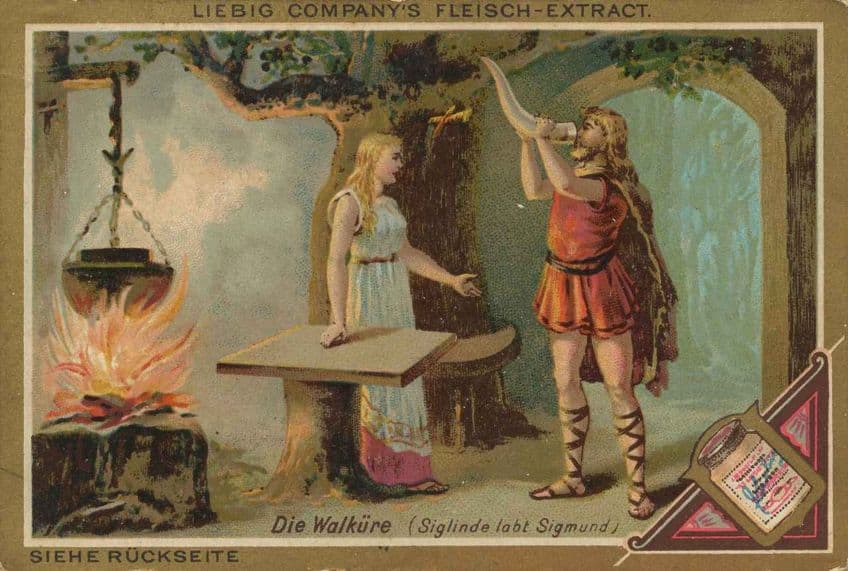
The Birth of Gesamtkunstwerk: Origins
The term Gesamtkunstwerk was first coined by Richard Wagner in the mid-19th century. Wagner was not only a prolific composer but also a visionary who sought to revolutionize the world of opera and artistic expression as a whole. His early experiences as a conductor and composer had left him dissatisfied with the conventional operatic productions of his time, which he believed failed to create a truly immersive and unified artistic experience. This dissatisfaction sowed the seeds of Gesamtkunstwerk, a concept that aimed to synthesize multiple art forms into a single, cohesive whole. Wagner’s creative journey was profoundly influenced by his study of ancient Greek drama, where music, poetry, and theater coalesced to create holistic experiences for the audience. He was also inspired by the architectural and visual elements of ancient Greek theaters.
These influences, combined with his belief in the primacy of drama and music, led him to develop the concept of Gesamtkunstwerk.
The Rise to Popularity
The concept of Gesamtkunstwerk gained significant traction during the mid-19th century. One of the pivotal moments in its popularization was the publication of Wagner’s essay Art and Revolution in 1849, in which he elaborated on his vision for a total work of art. However, it was Wagner’s groundbreaking four-opera cycle, Der Ring des Nibelungen, completed between 1848 and 1874, that catapulted Gesamtkunstwerk to the forefront of artistic discourse.
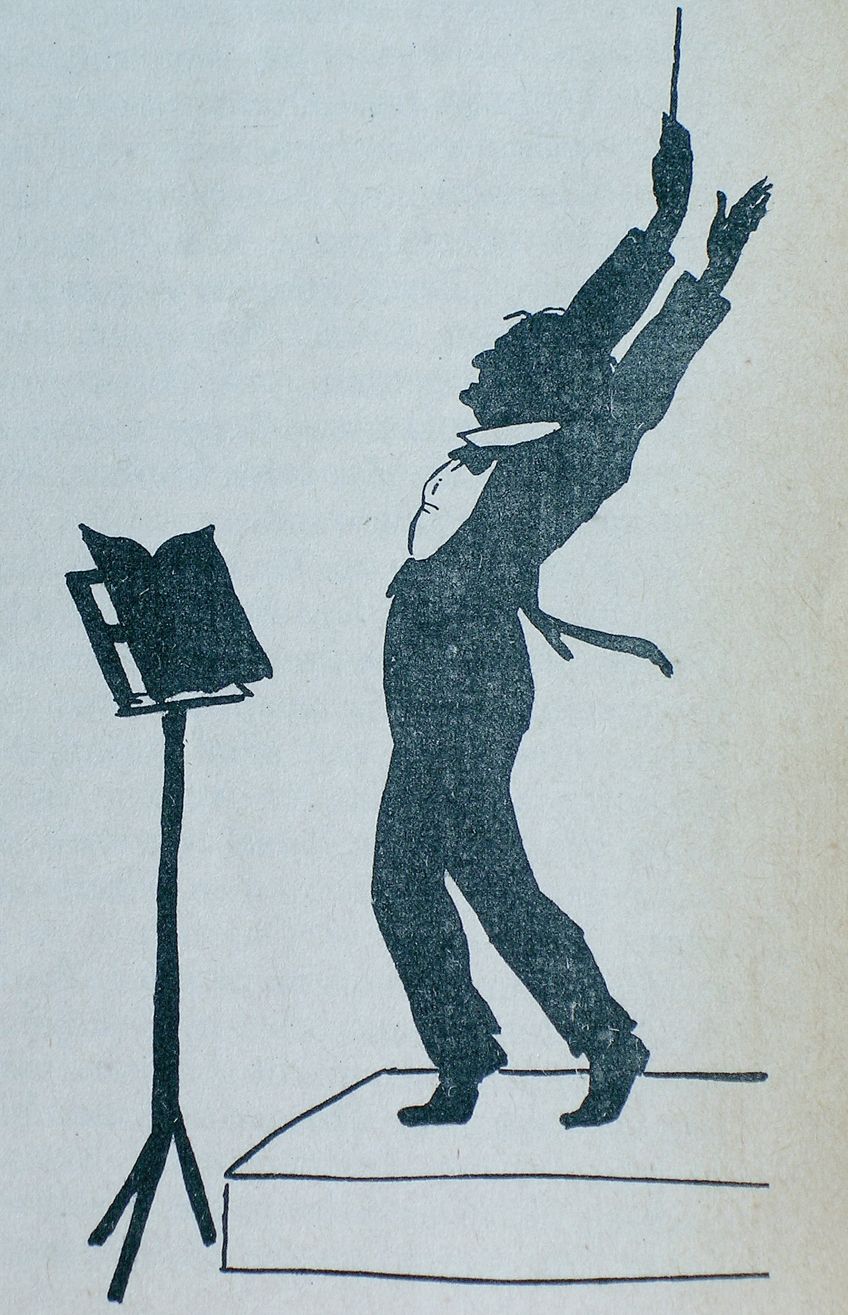
With The Ring, Wagner achieved an unprecedented fusion of music, drama, and visual elements, creating a Gesamtkunstwerk of unparalleled scope and ambition. The innovative use of leitmotifs (musical themes associated with characters or ideas), intricate set designs, and a continuous narrative across the four operas showcased the full potential of this concept. Audiences were enthralled by the immersive and emotionally charged experience, and Wagner’s Gesamtkunstwerk vision became a talking point in artistic circles.
Why It Became Famous and Endures
The enduring fame of Gesamtkunstwerk can be attributed to several factors. Firstly, Wagner’s uncompromising commitment to his vision and his ability to manifest it in his operatic works left an unforgettable mark on the history of art. His works challenged established norms and set new standards for artistic ambition and innovation.
Secondly, Gesamtkunstwerk tapped into a deep human desire for immersive experiences that engage multiple senses and emotions simultaneously. Wagner’s ability to create such experiences resonated with audiences, and the concept began to influence other art forms, including architecture, theater, and even film.
Lastly, the idea of Gesamtkunstwerk transcends its historical origins. It continues to inspire contemporary artists, architects, and creators across various disciplines. In the 20th and 21st centuries, artists like Frank Lloyd Wright (1867 – 1959), whose architectural designs aimed to integrate with their natural surroundings, and filmmakers like Stanley Kubrick (1928 – 1999), who meticulously crafted every element of their films, have drawn upon the principles of Gesamtkunstwerk.
The Technical Marvels of Gesamtkunstwerk: A Comprehensive Exploration
Gesamtkunstwerk, often referred to as the “total work of art,” is a concept that marries multiple art forms into a seamless, holistic experience. It stands as a testament to the human pursuit of artistic perfection. Beyond its conceptual and philosophical underpinnings, Gesamtkunstwerk boasts a rich tapestry of technical characteristics that contribute to its immersive and captivating nature. In this article, we delve into the technical marvels of Gesamtkunstwerk, examining the intricate craftsmanship, innovative techniques, and the synergistic blend of various artistic elements that make this concept a remarkable achievement in the world of art.
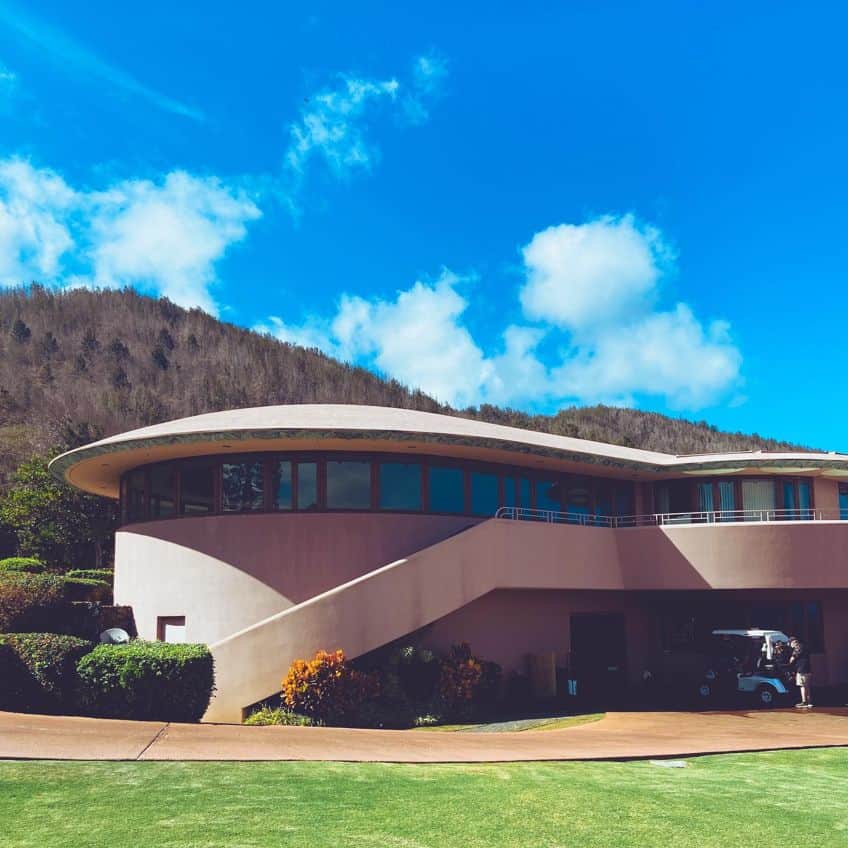
Integration of Multiple Art Forms
At the heart of Gesamtkunstwerk lies the fusion of diverse art forms, such as music, theater, literature, visual arts, and even architecture. This integration requires a profound understanding of each discipline and the ability to harmonize them into a cohesive whole. Achieving this level of synthesis demands not only artistic skill but also a technical mastery of each component.
Music as a Central Element
In the realm of Gesamtkunstwerk, music often takes center stage. Composers like Richard Wagner, the concept’s pioneer, possessed a deep understanding of music’s emotional power. They meticulously composed music to underscore the dramatic and thematic elements of the performance.
They did this using leitmotifs (recurring musical themes associated with characters or ideas) to connect the narrative and evoke emotional responses from the audience.
Innovative Set Design and Visual Effects
The technical aspects of Gesamtkunstwerk extend to set design and visual effects. A well-designed stage can transport the audience into the world of the performance. Innovations in stagecraft, such as moveable sets, rotating stages, and sophisticated lighting techniques, are essential in creating immersive environments. These technical elements enhance storytelling, heighten emotional impact, and contribute to the overall aesthetic experience.
Mastery of Theater and Performance
The performers in a Gesamtkunstwerk production must possess a high level of technical expertise. Actors, singers, and dancers not only need to excel in their respective disciplines but also understand how their roles fit into the broader artistic vision. Timing, precision, and emotional depth are critical technical elements in the execution of their craft.
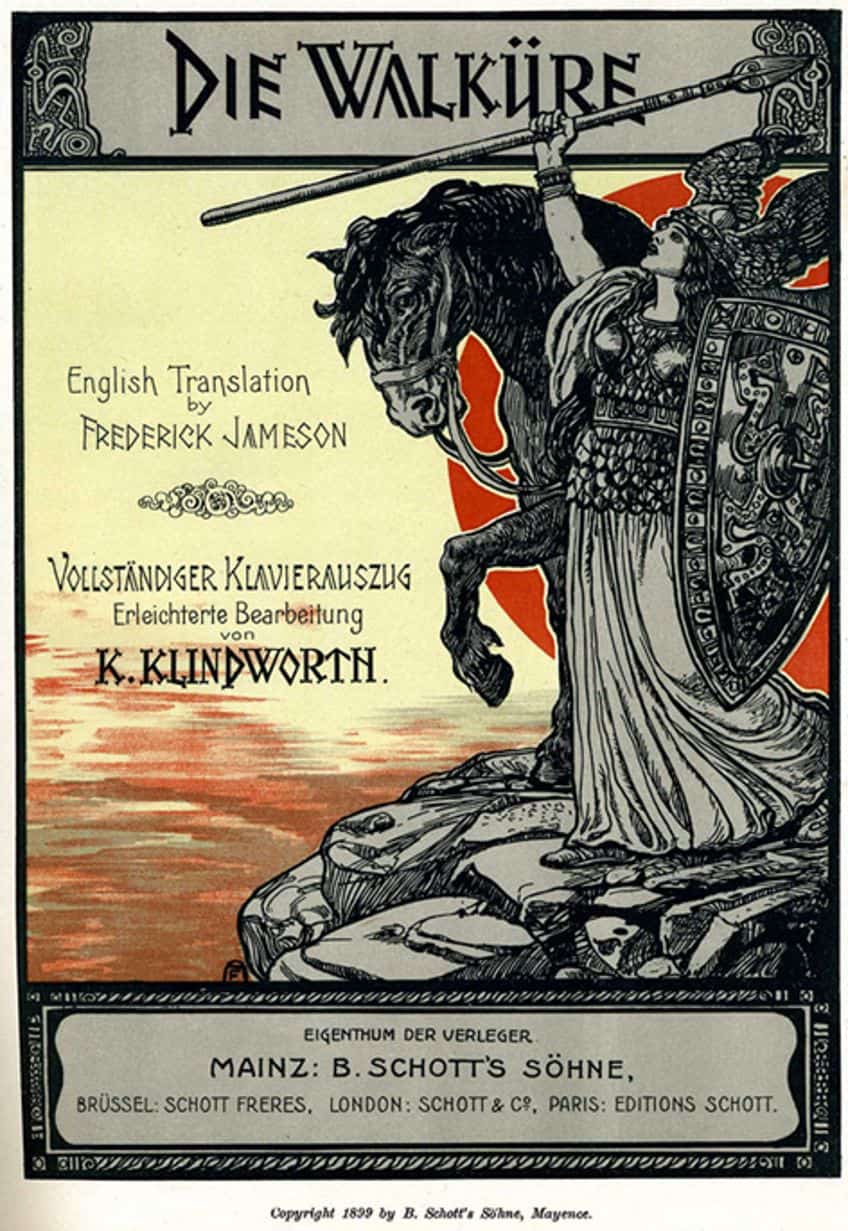
Multisensory Engagement
A hallmark of Gesamtkunstwerk is its ability to engage multiple senses simultaneously. This requires technical innovation in sound design, scent, touch, and even taste, depending on the context. The aim is to immerse the audience in a multi-dimensional experience that transcends traditional boundaries.
Architectural Considerations
In some instances, Gesamtkunstwerk extends beyond the performance space and includes architectural elements. Architects like Frank Lloyd Wright and Antoni Gaudí (1852-1926) embraced the concept to create holistic environments where architecture, interior design, and landscaping were seamlessly integrated.
Technical prowess in architectural design is crucial to ensure that every element complements and enhances the overall experience.
Artist Abstract: Richard Wagner
| Date of Birth | 22 May 1813 |
| Date of Death | 13 February 1883 |
| Nationality | German |
| Famous Works | Die Hochzeit (1832), Die Walküre (1856), and Der Ring des Nibelungen (1857) |
Richard Wagner, a 19th-century German composer and visionary, stands as an iconic figure in the annals of music history. His life and work are a testament to the transformative power of art and the enduring impact of a singular artistic vision. This artist abstract delves into the life, contributions, and legacy of Richard Wagner, exploring his multifaceted role as a composer, conductor, and thinker who redefined the landscape of opera and music.
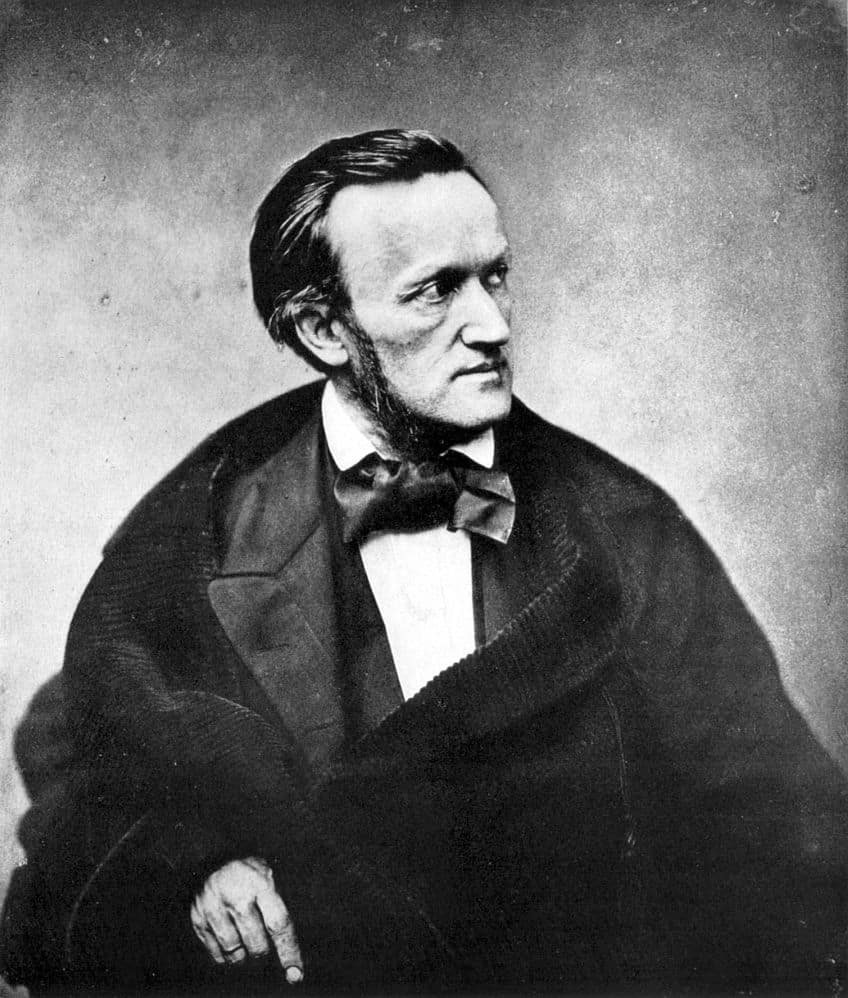
Early Life and Artistic Formation
Richard Wagner was born on May 22, 1813, in Leipzig, Germany. His early life was marked by a deep fascination with music, particularly the works of Ludwig van Beethoven and Carl Maria von Weber. His formal education in music began in his teenage years, where he received training in composition and musical theory.
Revolutionary Vision: Gesamtkunstwerk
One of Wagner’s most enduring legacies is the concept of Gesamtkunstwerk. He envisioned a fusion of various artistic forms, including music, theater, literature, and visual arts, to create a holistic and immersive experience for the audience.
This revolutionary vision reshaped the landscape of opera and influenced artistic thought across disciplines.
Musical Mastery and Innovation
Wagner’s compositions reflect his technical prowess and innovation. His use of leitmotifs, recurring musical themes associated with characters or ideas, brought a new dimension to storytelling in opera. Works like Tristan und Isolde (1859) and the monumental Der Ring des Nibelungen (1848-1874) showcase his ability to craft intricate and emotionally charged music.
Operatic Epics: Der Ring Cycle
Der Ring des Nibelungen, often referred to as the Ring Cycle stands as one of Wagner’s crowning achievements. This four-opera cycle, composed over several decades, weaves together myth, legend, and human drama on an epic scale. Wagner’s meticulous attention to detail and his demands on performers set new standards for operatic productions.
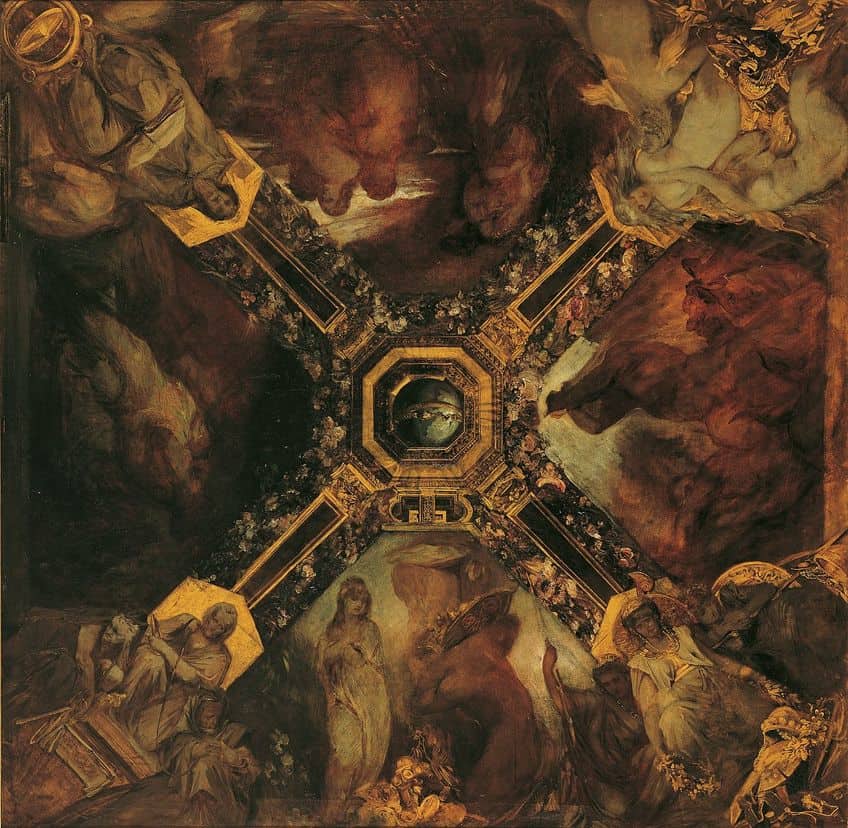
Controversy and Influence
Wagner’s personal life and controversial views, including anti-Semitic writings, have been a subject of intense scrutiny and debate. Nevertheless, his artistic contributions cannot be denied. His influence extends to composers like Gustav Mahler and Richard Strauss, and his ideas continue to inspire artists, architects, and thinkers across the globe.
Legacy and Enduring Impact
Richard Wagner’s legacy is complex and multifaceted. His contributions to the world of music, theater, and the concept of Gesamtkunstwerk have left an indelible mark on the arts. Despite the controversies surrounding his life, his artistic innovations and visionary thinking continue to shape the course of opera and the broader artistic landscape.
This makes him an artist of unparalleled influence and significance.
In-Depth Technical and Conceptual Analysis of Der Ring des Nibelungen (1848 – 1874)
| Title | Der Ring des Nibelungen |
| Date | 1848 – 1874 |
| Medium | Opera |
| Parts | 4 |
| Language | German |
| Premiere as a cycle | 1876 |
Richard Wagner’s Der Ring des Nibelungen, often referred to simply as the Ring Cycle, is one of the most ambitious and technically intricate compositions in the history of opera. Comprising four interconnected operas—Das Rheingold, Die Walküre, Siegfried, and Götterdämmerung —the Ring Cycle represents a monumental achievement in the fusion of music, drama, and storytelling. In this in-depth technical analysis, we will explore the various facets of Wagner’s magnum opus, including its structure, orchestration, leitmotif technique, and harmonic language.
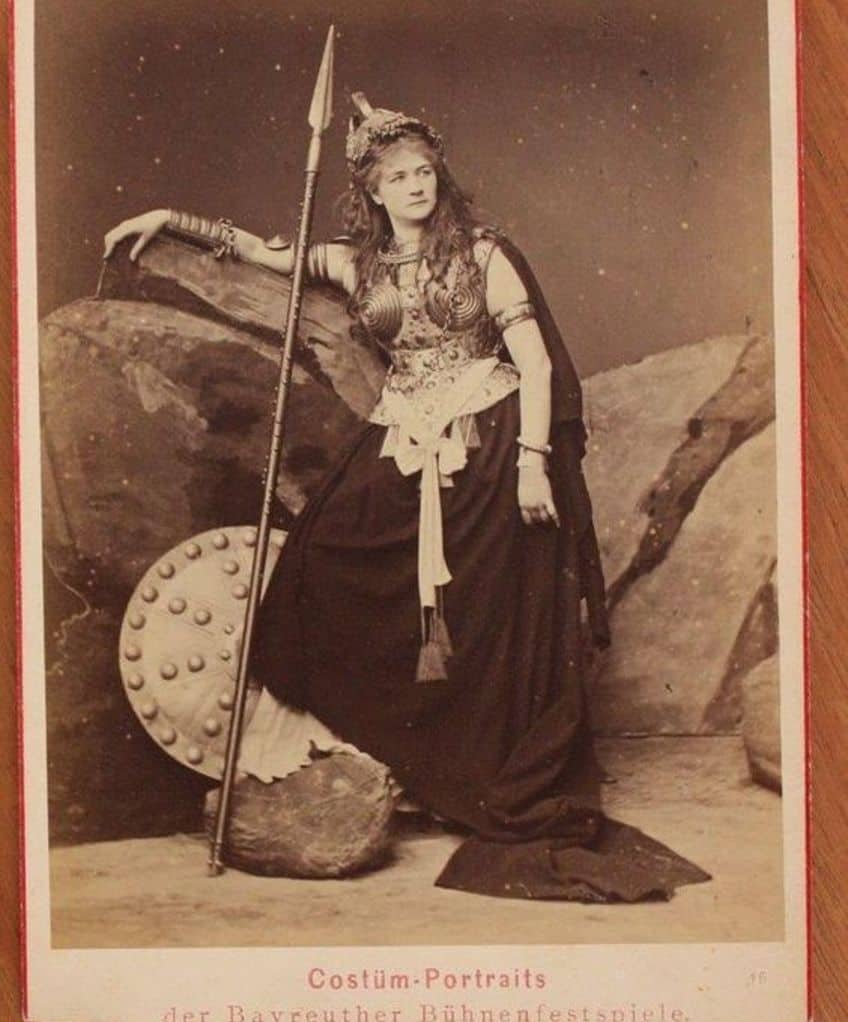
Structure and Organization
Wagner’s Ring Cycle is structured as a tetralogy, with each of the four operas forming a distinct segment of a grand narrative. This structure allowed Wagner to create a vast and intricate musical and dramatic world. The operas are interconnected by themes, characters, and the overarching story of the magical ring’s curse, which provides cohesion and unity throughout the entire cycle.
Orchestration
One of the most remarkable technical aspects of the Ring Cycle is Wagner’s orchestration. He expanded the orchestra to include a massive ensemble, introducing new instruments and techniques to achieve his desired sonic effects. The inclusion of Wagner tubas, bass trumpet, and an expanded brass section allowed him to create unique timbral textures.
His orchestration also incorporates a vast array of percussion instruments, enhancing the dramatic intensity of key moments.
Leitmotif Technique
Wagner’s innovative use of leitmotifs is a defining feature of the Ring Cycle. Leitmotifs are recurring musical themes associated with specific characters, objects, emotions, or ideas. These motifs serve as a musical vocabulary that Wagner uses to convey complex emotions and narratives. The sheer number and intricacy of these leitmotifs in the Ring Cycle are staggering, with over 90 individual motifs woven into the score. Each leitmotif evolves and transforms throughout the cycle, reflecting the characters’ development and the unfolding drama.
Harmonic Language
Wagner’s harmonic language in the Ring Cycle is both revolutionary and complex. He pushed the boundaries of tonality, often blurring the lines between keys and creating a sense of ambiguity and tension. His use of chromaticism and unresolved dissonances heightens the emotional intensity of the music, contributing to the psychological depth of the characters and the overall narrative. Wagner’s innovative harmonic language had a profound influence on later composers, including Richard Strauss and Gustav Mahler.

Gesamtkunstwerk and Staging
Wagner’s concept of Gesamtkunstwerk, or the “total work of art,” is fully realized in the Ring Cycle. Beyond the musical elements, he provided detailed stage directions and envisioned a holistic theatrical experience that incorporated set design, lighting, and acting. The technical challenge of bringing his ambitious vision to life on stage is a testament to the interdisciplinary nature of the Ring Cycle.
Myth and Legend
At its core, the Ring Cycle draws extensively from Norse mythology and Germanic legends. Wagner’s fascination with these ancient tales reflects his belief in the enduring relevance of myth as a means of exploring universal human themes.
Through characters like Wotan, Siegfried, and Brünnhilde, Wagner weaves a narrative that delves into the timeless struggle for power, love, and destiny.
The Curse of Power
Central to the Ring Cycle is the concept of the curse associated with the magical ring forged from the Rhinegold. This curse symbolizes the corrupting and destructive nature of unbridled power and greed. The ring’s journey through the hands of various characters underscores the idea that the pursuit of power can lead to tragic consequences, a theme that remains relevant in contemporary society.
Redemption and Sacrifice
A recurring theme in Wagner’s work is the idea of redemption through sacrifice. Characters like Brünnhilde and Siegfried embody this theme, as they make selfless sacrifices for the greater good. Brünnhilde’s ultimate act of sacrificing herself in the funeral pyre of Siegfried not only redeems the world but also signifies the potential for personal transformation through selflessness.
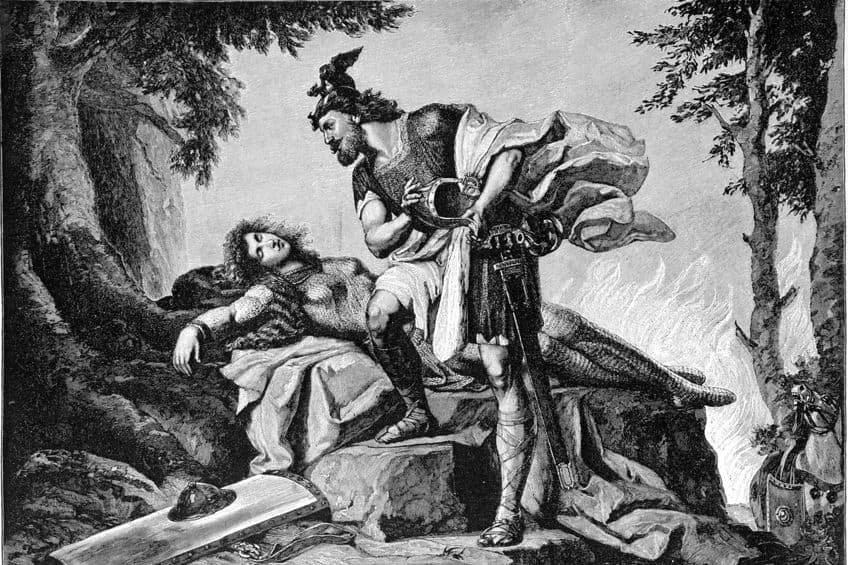 Siegfried (Sigurðr) awakens Brunhild (Brynhildr), a scene from Wagner’s Ring and Norse mythology (1892) by Otto Donner von Richter; Original art by Otto Donner von Richter (1828-1911)Engraving by R. Bong (fl. 1880-1908), Public domain, via Wikimedia Commons
Siegfried (Sigurðr) awakens Brunhild (Brynhildr), a scene from Wagner’s Ring and Norse mythology (1892) by Otto Donner von Richter; Original art by Otto Donner von Richter (1828-1911)Engraving by R. Bong (fl. 1880-1908), Public domain, via Wikimedia Commons
Nature and Humanity
Wagner’s portrayal of nature in the Ring Cycle is both majestic and ominous. The river Rhine, the primeval forest, and the fiery mountain forge are not merely backdrops but entities that shape the fate of the characters. This underscores the interconnectedness of nature and humanity, emphasizing the consequences of disrupting this balance.
Art and Artifice
The concept of Gesamtkunstwerk, or the total work of art, is central to Wagner’s vision. He believed that through the synthesis of various art forms, a profound and transformative artistic experience could be achieved.
This concept is not only realized in the music but also in the theatrical staging, set design, and overall production of the Ring Cycle.
Love and Desire
Love, desire, and human relationships play a significant role in the Ring Cycle. From the ill-fated love between Siegmund and Sieglinde to the profound connection between Brünnhilde and Siegfried, Wagner explores the complexities of human emotions and their power to shape destinies.
The Concept of Time
Wagner’s manipulation of time is a notable conceptual element. The cyclic nature of the music and the narrative reflects the idea that history repeats itself, and the consequences of actions reverberate through time. This cyclical structure contributes to the epic quality of the work.

In conclusion, Gesamtkunstwerk, often translated as the “total work of art,” transcends its mere definition to embody a profound and enduring concept that resonates with the very essence of artistic expression. Richard Wagner’s visionary contributions to this concept, through his operatic masterpieces and writings, have left an indelible mark on the artistic landscape. Gesamtkunstwerk serves as a testament to the human capacity to break down the boundaries between various art forms, weaving them into a seamless tapestry that envelops audiences in a world of immersive beauty and emotion. Today, Wagner’s legacy continues to inspire artists across disciplines, reminding us of the timeless allure and transformative power of the total work of art.
Frequently Asked Questions
What Is Wagner’s Theory of Gesamtkunstwerk?
Wagner’s theory of Gesamtkunstwerk represents an imaginative strategy to artistic creation that seeks the complete integration of multiple art forms into a unified and harmonious whole. At its core, this theory envisions the synthesis of music, theater, literature, visual arts, and even architecture to create an immersive and all-encompassing artistic experience. Wagner believed that by merging these diverse elements, he could achieve a level of emotional and aesthetic impact that surpassed the sum of its parts. His theory also emphasized the primacy of drama and music as central components, with the music serving as a powerful emotional undercurrent that reinforced and elevated the dramatic narrative. Wagner’s Gesamtkunstwerk theory marked a profound departure from traditional operatic conventions and left an indelible mark on the course of artistic expression.
How Did Wagner Integrate Architecture Into His Operas?
Richard Wagner integrated architecture into his operas through the design of the purpose-built Bayreuth Festspielhaus, meticulously crafted stage directions, and innovative set designs. The Festspielhaus, designed to Wagner’s specifications, optimized acoustics and audience seating, creating a unique theatrical environment. Hidden orchestra pits enhanced the integration of music and drama, while detailed stage directions and moveable sets incorporated architectural elements that complemented the narrative. Wagner’s attention to natural lighting further contributed to the immersive and visually stunning productions that epitomized his concept of Gesamtkunstwerk.
Nicolene Burger, a South African multimedia artist and creative consultant, specializes in oil painting and performance art. She earned her BA in Visual Arts from Stellenbosch University in 2017. Nicolene’s artistic journey includes exhibitions in South Korea, participation in the 2019 ICA Live Art Workshop, and solo exhibitions. She is currently pursuing a practice-based master’s degree in theater and performance. Nicolene focuses on fostering sustainable creative practices and offers coaching sessions for fellow artists, emphasizing the profound communicative power of art for healing and connection. Nicolene writes blog posts on art history for artfilemagazine with a focus on famous artists and contemporary art.
Learn more about Nicolene Burger and about us.
Cite this Article
Nicolene, Burger, “Gesamtkunstwerk – A Holistic Approach to Art Creation.” artfilemagazine – Your Online Art Source. October 5, 2023. URL: https://artfilemagazine.com/gesamtkunstwerk/
Burger, N. (2023, 5 October). Gesamtkunstwerk – A Holistic Approach to Art Creation. artfilemagazine – Your Online Art Source. https://artfilemagazine.com/gesamtkunstwerk/
Burger, Nicolene. “Gesamtkunstwerk – A Holistic Approach to Art Creation.” artfilemagazine – Your Online Art Source, October 5, 2023. https://artfilemagazine.com/gesamtkunstwerk/.


